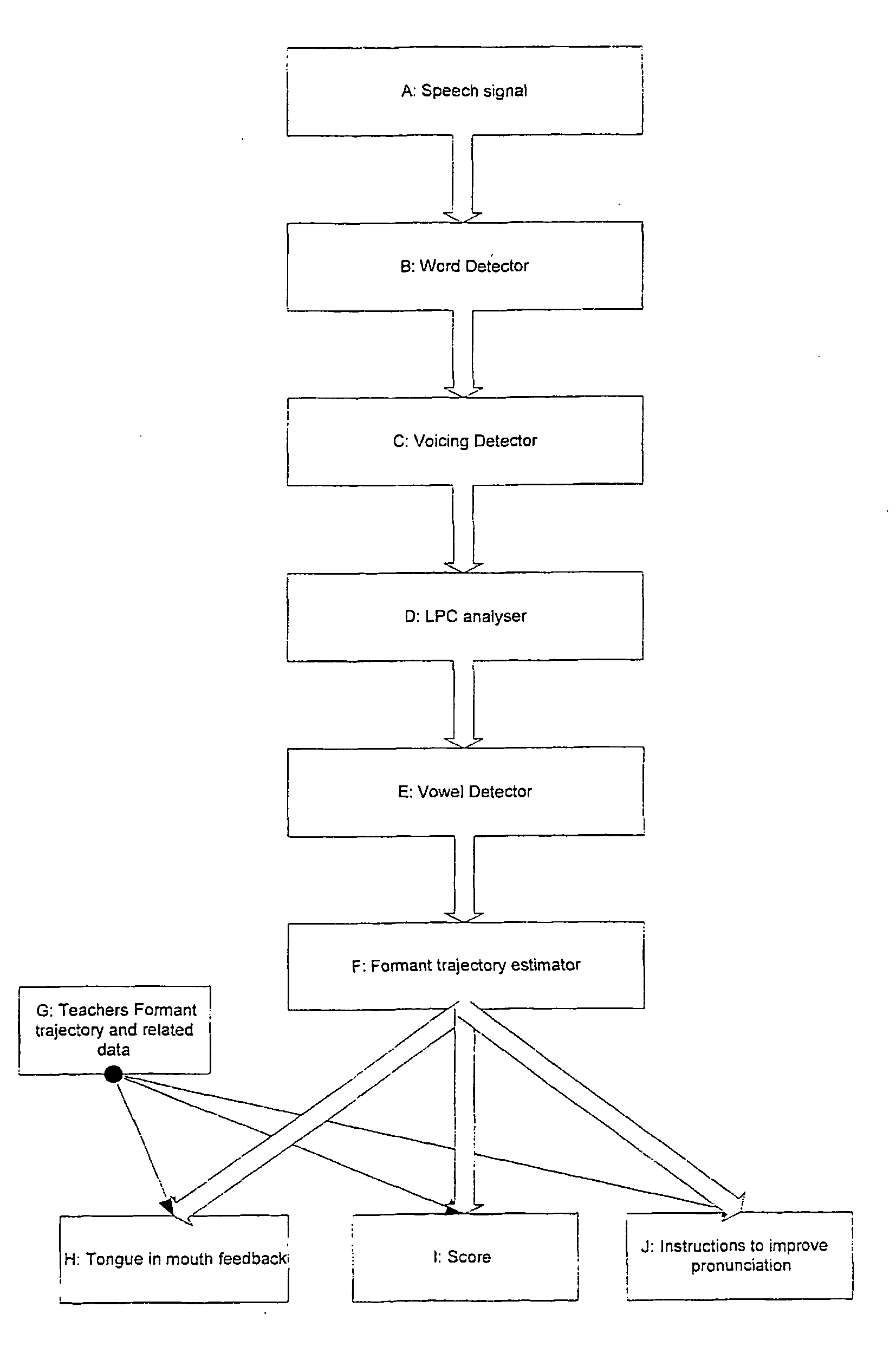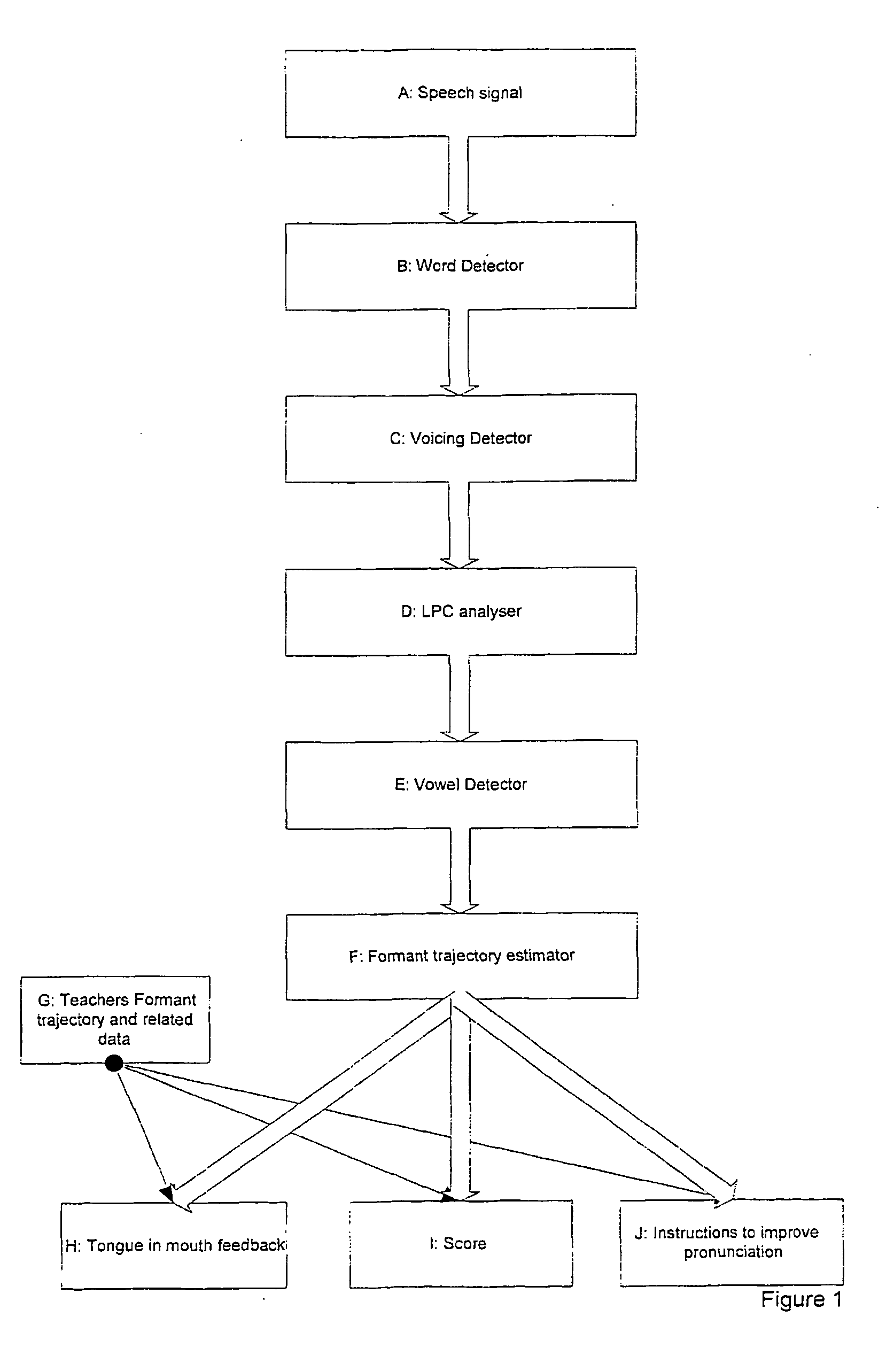Method, system and software for teaching pronunciation
a technology of pronunciation and software, applied in the field of method, system and software for teaching pronunciation, can solve the problems of student's inability to hear the difference between the sounds, time-consuming and frustrating for students, and student's inability to know how much of their teacher's pronunciation to copy, so as to prevent bouncing
- Summary
- Abstract
- Description
- Claims
- Application Information
AI Technical Summary
Benefits of technology
Problems solved by technology
Method used
Image
Examples
Embodiment Construction
[0089] The present invention relates to a method of teaching pronunciation by using formant trajectories and by splitting speech into phonemes. The invention will be described in relation to a computerised teaching system to improve the pronunciation and listening skills of a person learning English or any other language as a second language.
[0090] It will be appreciated that the invention may be used for improving the pronunciation and listening skills of a person in their native language, or for improving the pronunciation of the Deaf, with appropriate modifications.
[0091] The method of the invention will now be described with reference to FIG. 1.
A: The Speech Signal
[0092] Speech from a user or teacher is provided as input to a computer implementing the method via a typical process, such as through a microphone into the soundcard of the computer. Other ways of providing input may be used, such as pre-recording the speech on a second device and transferring the recorded speech...
PUM
 Login to View More
Login to View More Abstract
Description
Claims
Application Information
 Login to View More
Login to View More - R&D
- Intellectual Property
- Life Sciences
- Materials
- Tech Scout
- Unparalleled Data Quality
- Higher Quality Content
- 60% Fewer Hallucinations
Browse by: Latest US Patents, China's latest patents, Technical Efficacy Thesaurus, Application Domain, Technology Topic, Popular Technical Reports.
© 2025 PatSnap. All rights reserved.Legal|Privacy policy|Modern Slavery Act Transparency Statement|Sitemap|About US| Contact US: help@patsnap.com



